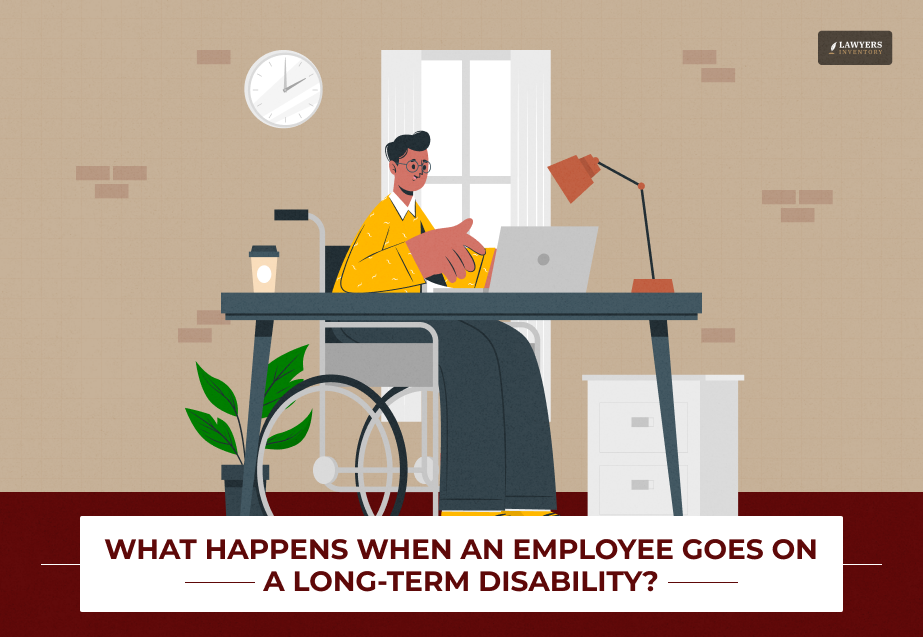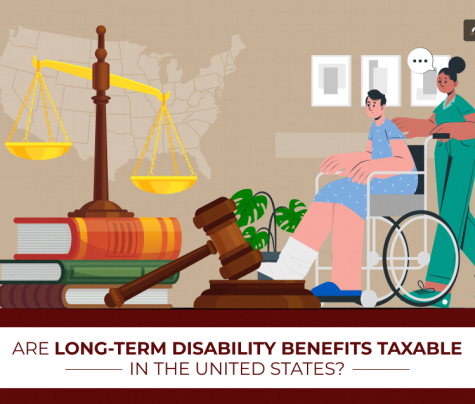
So, imagine this. You’re at work, doing your thing like always, and then life throws you a curveball — an injury, illness, or condition that suddenly means you can’t keep working. And not just for a week or two… I am talking months, maybe even years.
Now what?
That’s where long-term disability (LTD) steps in. It’s a benefit that can literally keep you afloat when you can’t earn your full paycheck.
But here’s the thing — when you actually go on LTD, a lot of questions come flying at you:
- Will I still have a job?
- How much money will I get?
- What happens to my health insurance?
- Can my employer replace me?
I’ve done the homework (so you don’t have to), and in today’s blog, I’ll break down exactly what happens when an employee goes on long-term disability — from your paycheck to your benefits, and even your rights under the law.
So, if you’ve been wondering about LTD, or if you’re just curious about how this whole thing works, keep reading till the end…
What Is Long-Term Disability?

First things first — what are we even talking about here?
Long-term disability (LTD) is a type of insurance that replaces part of your income if you can’t work due to a serious medical condition that lasts a long time. Usually, LTD kicks in after your short-term disability (STD) benefits run out.
Here’s the quick comparison:
- Short-Term Disability (STD): Covers a few weeks to a few months.
- Long-Term Disability (LTD): Covers months, years, or even until retirement age, depending on your policy.
Examples Of Why Someone Might Go On LTD:
- Cancer treatment
- Major surgery recovery
- Chronic illnesses like MS
- Severe back injuries
- Stroke
LTD usually covers 50–70% of your pre-disability income. Not your full salary, but enough to help you pay the essentials.
How Do You Qualify for LTD?
It’s not like you can just email HR and say, “Hey, I’m on long-term disability now.” There’s a process.
Here’s what usually happens:
- Medical proof: You’ll need detailed doctor’s reports, test results, and treatment notes.
- Elimination period: This is a waiting period (often 90–180 days) after you stop working before LTD starts paying.
- Approval: Your employer and the insurance company have to sign off on your claim.
Pro Tip: Keep every medical record and every email from HR or your insurer. If there’s ever a dispute, that paper trail is your best friend.
What Happens When An Employee Goes On Long-Term Disability?

Here’s the big one: Will my employer hold my job?
Well, maybe.
If you qualify for FMLA (Family and Medical Leave Act), you get 12 weeks of job-protected leave. But LTD usually lasts way longer than that. Once the FMLA is over, your employer might legally replace you — unless other protections kick in.
That’s where the ADA (Americans with Disabilities Act) comes in. Under ADA, your employer has to provide “reasonable accommodations” if you can return to work but need adjustments (think flexible schedules, modified duties).
Please Note: LTD protects your income, not necessarily your job. You could come back to a different position, or sometimes, no position at all.
What Happens to Your Paycheck?
When you’re on LTD, your regular salary stops. Instead, you get:
- A percentage of your old paycheck: usually 60% is the magic number.
- Payments from the insurance company: not from your employer.
- Possible taxes: If your employer paid the premiums, your benefits may be taxable. If you paid with after-tax dollars, they’re usually tax-free.
- Extra help from SSDI: You might also qualify for Social Security Disability Insurance, which can boost your income.
Example: If you made $5,000 a month before disability, a 60% LTD policy means $3,000/month. If it’s taxable, you’ll take home less.
What Happens to Your Benefits?
This is where a lot of people get blindsided.
- Health insurance: Some employers keep you on their plan, but you may have to pay your share. Others switch you to COBRA.
- Retirement plans: Your 401(k) balance stays, but employer contributions may stop.
- Life insurance: Some policies waive premiums while you’re on LTD — but only if you apply.
- Perks: Bonuses, stock options, tuition help… usually paused.
Returning to Work After LTD
Let’s say your doctor clears you to go back to work — great news! But you might not jump straight into your old 40-hour schedule.
You could see:
- Gradual return programs: Start part-time, then build up.
- Modified duties: Lighter workload, ergonomic desk, remote work.
- Requalification requirements: Some benefits like bonuses may need a full return to normal duties.
Staying in touch with HR during LTD can make your return much smoother.
When LTD Turns Into Permanent Disability
Sometimes, recovery isn’t possible, and LTD eventually ends. If that happens:
- You may move to permanent disability status.
- SSDI could become your main income source.
- If the disability is work-related, workers’ comp benefits might apply.
Your Legal Rights on LTD
There are three big laws to know:
- FMLA: 12 weeks of unpaid, job-protected leave.
- ADA: Rights to reasonable accommodation.
- ERISA: Protects you from unfair claim denials in employer disability plans.
Some states also have extra protections — worth checking your local laws.
Frequently Asked Questions (FAQs):
Here are some questions that people often want to know about what happens when an employee goes on long-term disability:
1. Can I Be Fired While On Long-Term Disability?
Yes, but not because you’re disabled. Employers can terminate employment for unrelated reasons, such as layoffs or company restructuring.
2. Will I Still Get Health Insurance While On LTD?
It depends on your employer’s policy. Some continue benefits, others require you to switch to COBRA or pay premiums yourself.
3. Can I Work A Different Job While On LTD?
In some cases, yes — but it may reduce or eliminate your benefits depending on your policy terms.
4. Do LTD Benefits Replace My Full Salary?
No. Most policies replace 50%–70% of your base pay.
5. What Happens If My LTD Claim Is Denied?
You can appeal the decision with additional evidence. Consulting an employment or disability lawyer may increase your chances.
6. Can I Get Both LTD And SSDI?
Yes, but your LTD benefits may be reduced by the amount you receive from SSDI.
Common Mistakes People Make on LTD (and How to Avoid Them)
There are times when people make mistakes when applying for their LTD. And needless to say, they pay a heavy price for that.
Some of the most common ones among these are as follows:
- Ignoring your insurer’s requests: Could get your benefits cut.
- Not keeping updated medical records: They’ll want proof you’re still disabled.
- Assuming your job is guaranteed: It’s not.
- Working secretly: If your policy forbids it, you could lose benefits.
Here’s a quick LTD Checklist for you:
- Get your doctor’s full support.
- Keep every record.
- Ask HR about health insurance, retirement, and life insurance.
- File on time.
- Know your rights under FMLA, ADA, and ERISA.
Going on long-term disability isn’t the end of your career, but it’s a big shift. You’ll likely get a reduced income, your benefits may change, and your exact job role might not be waiting for you.
The good news? Laws and insurance policies exist to help you through it. The key is knowing your rights, planning ahead, and staying in communication with your employer and insurer.
And if you ever feel like you’re getting the short end of the stick? That’s when it’s time to get legal advice.
Read Also:
- Your EASIEST Guide To File A Slip And Fall Lawsuit On The Internet
- Understanding the Romeo and Juliet Law: What is the Age of Consent in Texas?
- A Guide To Mesothelioma Lawsuit Settlements For Victims And Their Loved Ones











0 Reply
No comments yet.